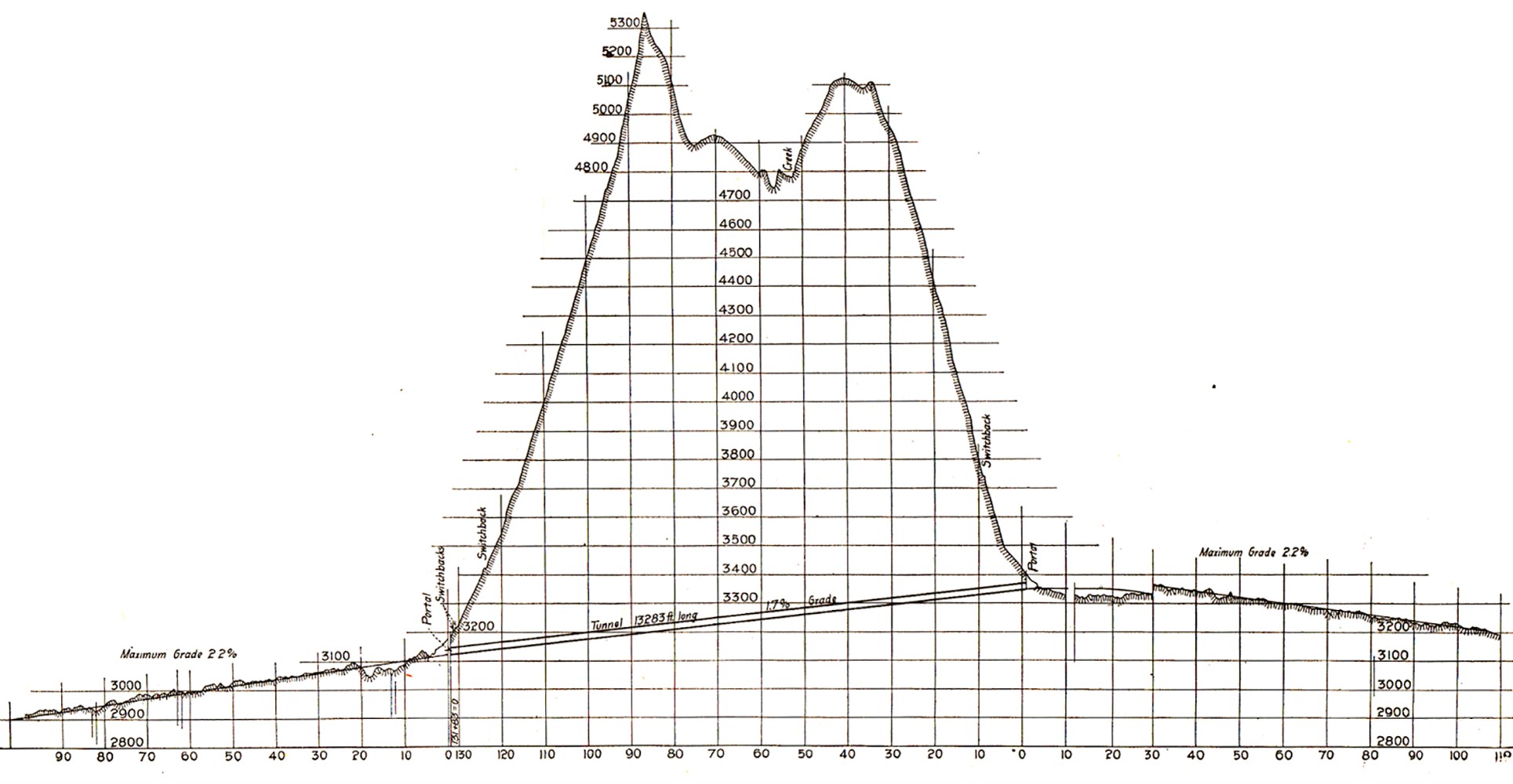mm 2469.0 You are standing directly above the first Cascade Tunnel under Stevens Pass. Its east portal is 0.2 miles NE from you.
The tunnel was surveyed and planned in 1891, but construction of the tunnel did not begin until after the system of spurs was built to get trains running over the pass asap. The trail you walk now is what remains of Spur #3. Tunnel construction started August 1897 with crews of 400-600 each digging from both ends.
One of the peaks NE of you was used as a point of reference for digging the tunnel straight. An upright pipe was installed at the mouth of the tunnel, and a tower built 1.8 miles to the NW (off today FS-67) inline with the peak and the mouth of the tunnel. While digging, workers used the pipe and tower as a "gunsight" simply keeping the pipe in-line with the distant tower as they dug. This sight included both horizontal and vertical targets. The tunnel slopes down to the west at a 1.7% grade. The crew digging from the west had a similar target based on the peak of Windy Mountain.
Digging progressed at an average speed of 350 feet per month. As they proceeded, the walls were lined with up to 3 feet of concrete made from the gravel produced by the digging. As a workers benefit, women who disembarked or boarded the train at either work camp could ride free, no questions asked.
The east and west excavation crews met in the middle on September 23rd 1900. They hit their targets within one inch of error. The completion of the tunnel meant the spur line you are currently walking was dismantled, trading 9 miles of spurs for 2.6 miles of tunnel, and avoiding almost 1,000 feet of elevation gain. The first train ran through the new tunnel on December 10th, 1900.
From the beginning, the tunnel had a ventilation problem with the coal-burning engines. The natural air flow kept eastbound trains engulfed in their own poisonous smoke as they worked extra hard to travel up the grade. Passengers at the rear of westbound trains also contended with smoke. Because coal furnaces could not be quickly shut off, trains could not stop inside the tunnel at all without asphyxiating the passengers and crew.
This problem existed for 9 years until the solution was completed: Electric locomotives were stationed at either end of the tunnel and were used to get trains through the tunnel. These engines were powered by 2,200 volt overhead wires, and those wires were powered by a dam built on the Wenatchee river. If you drive to Leavenworth, you will notice the dam right next to the highway less than a 1/2 mile downriver from The Alps Fudge and Candy shop. Eastbound uphill trains required up to four electric locomotives going 8 mph. Each of the GE model 5000 locomotives had four 375 horsepower motors. Thanks in part to this tunnel, in 1909 the trip from St. Paul to Seattle was only 48 hours.
The east portal as it is today, just a few steps NE from you
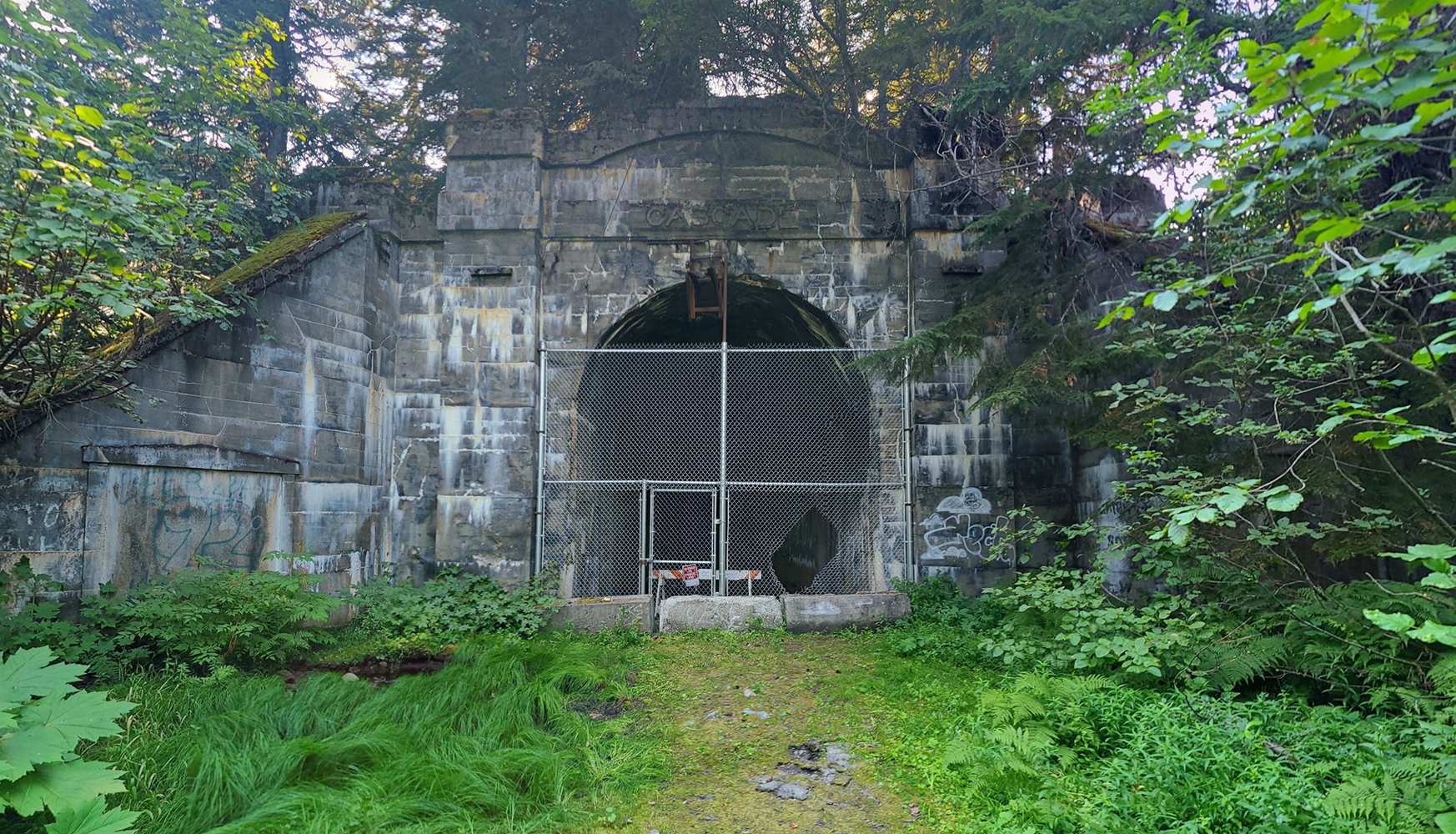
Digging the tunnel
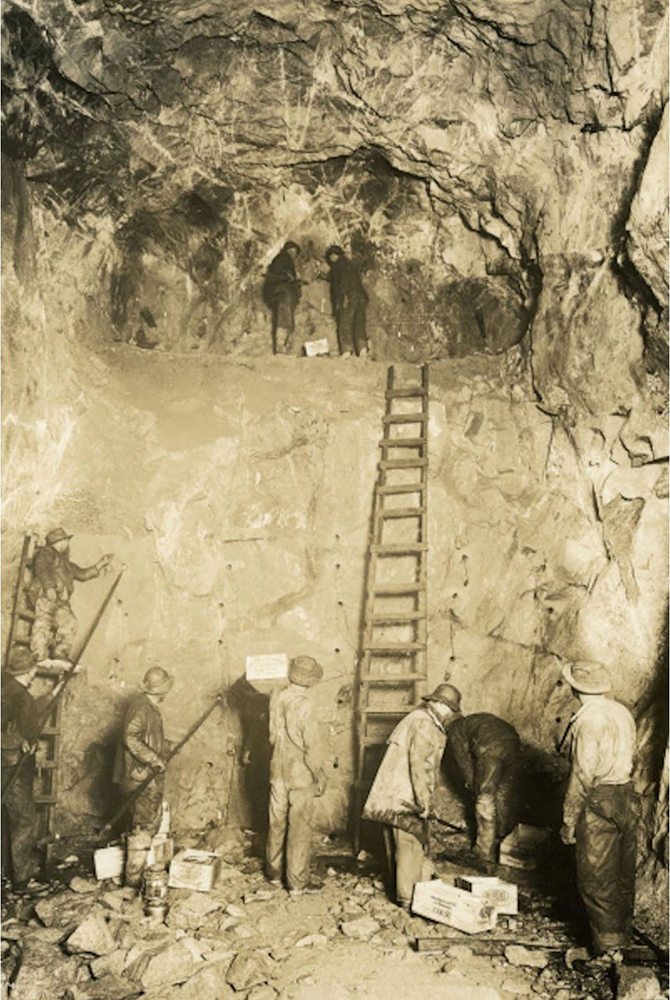
The west portal operational
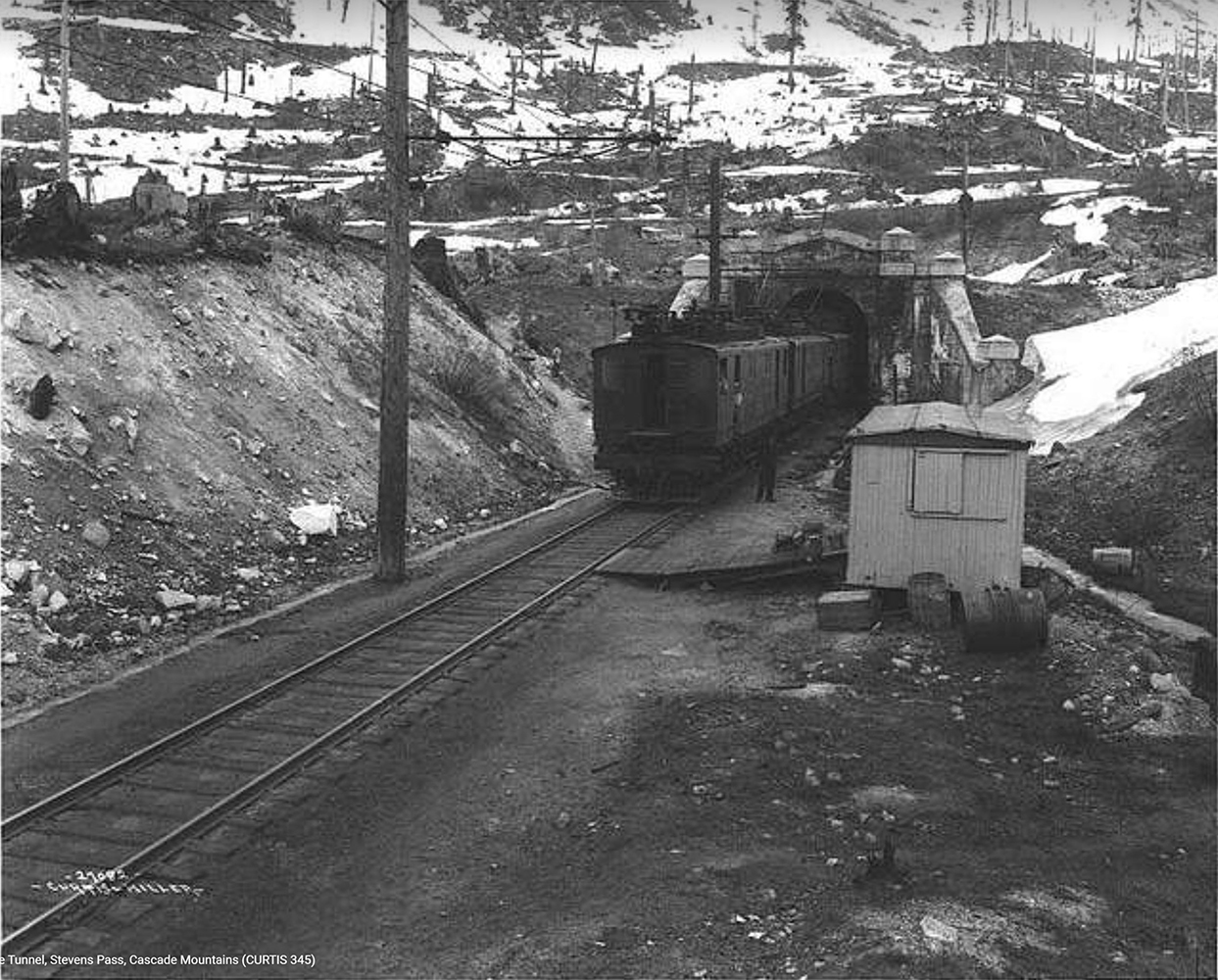
One of the GE 5000 electric locomotives
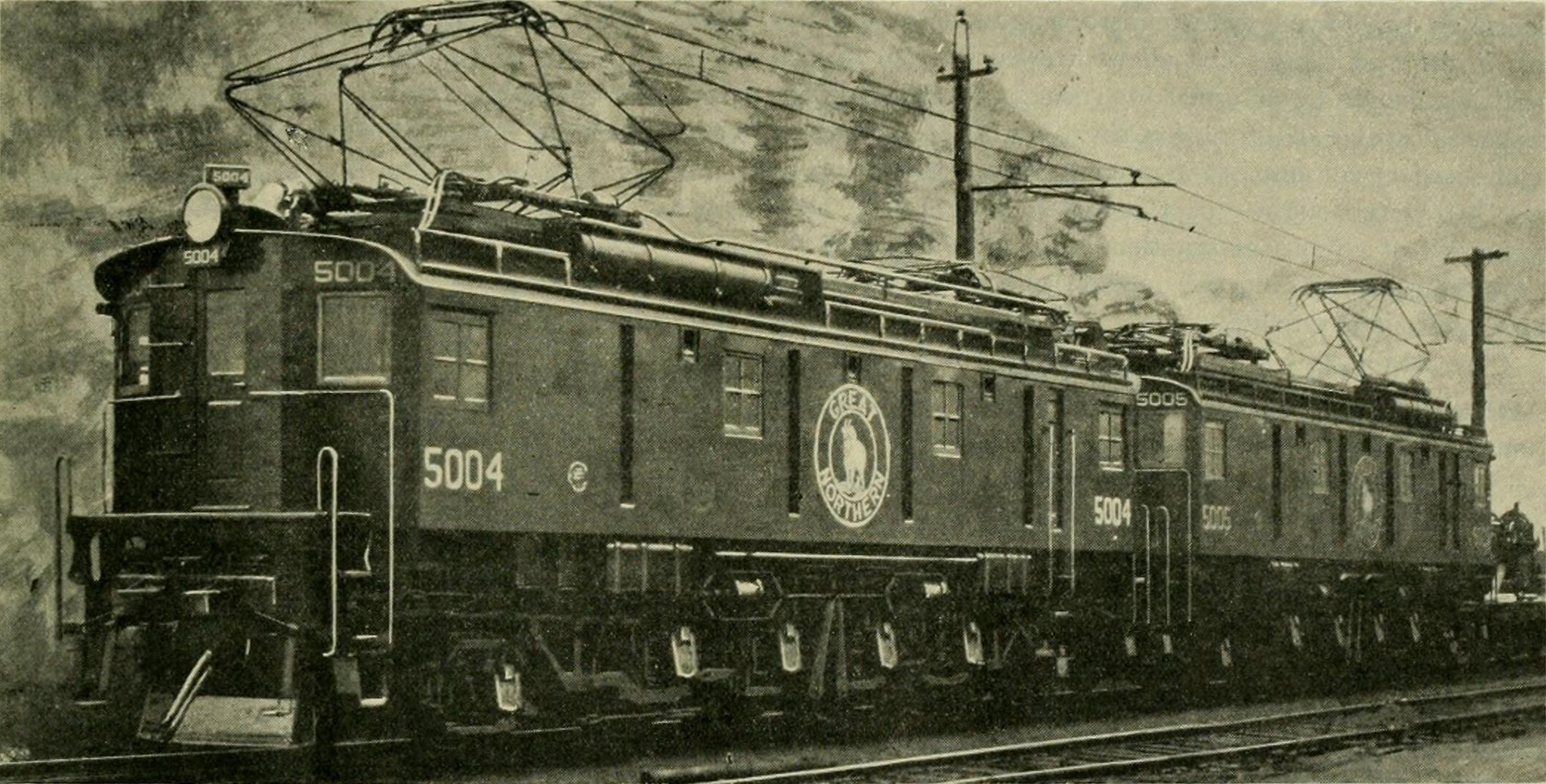
The west portal
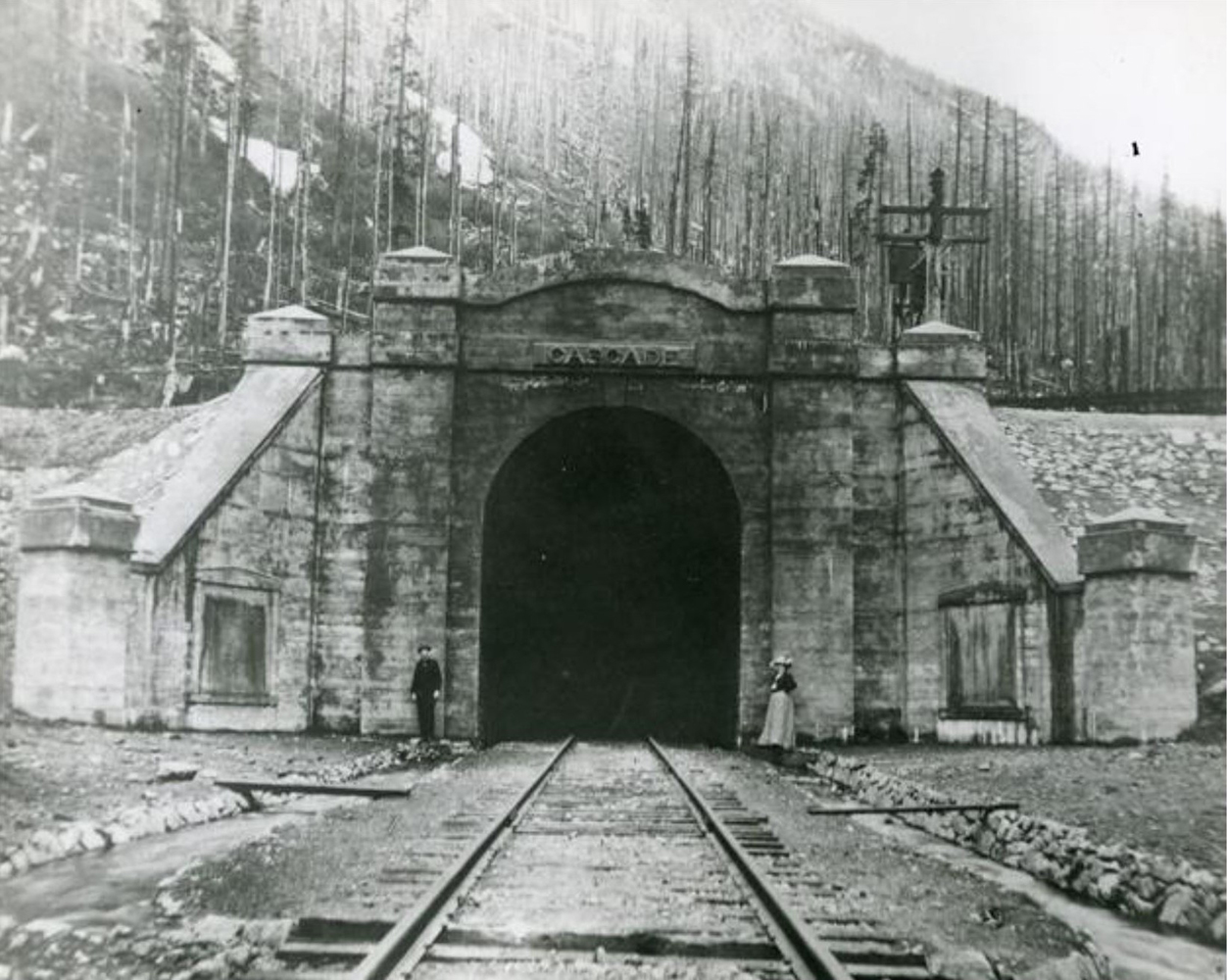
A locomotive in the tunnel
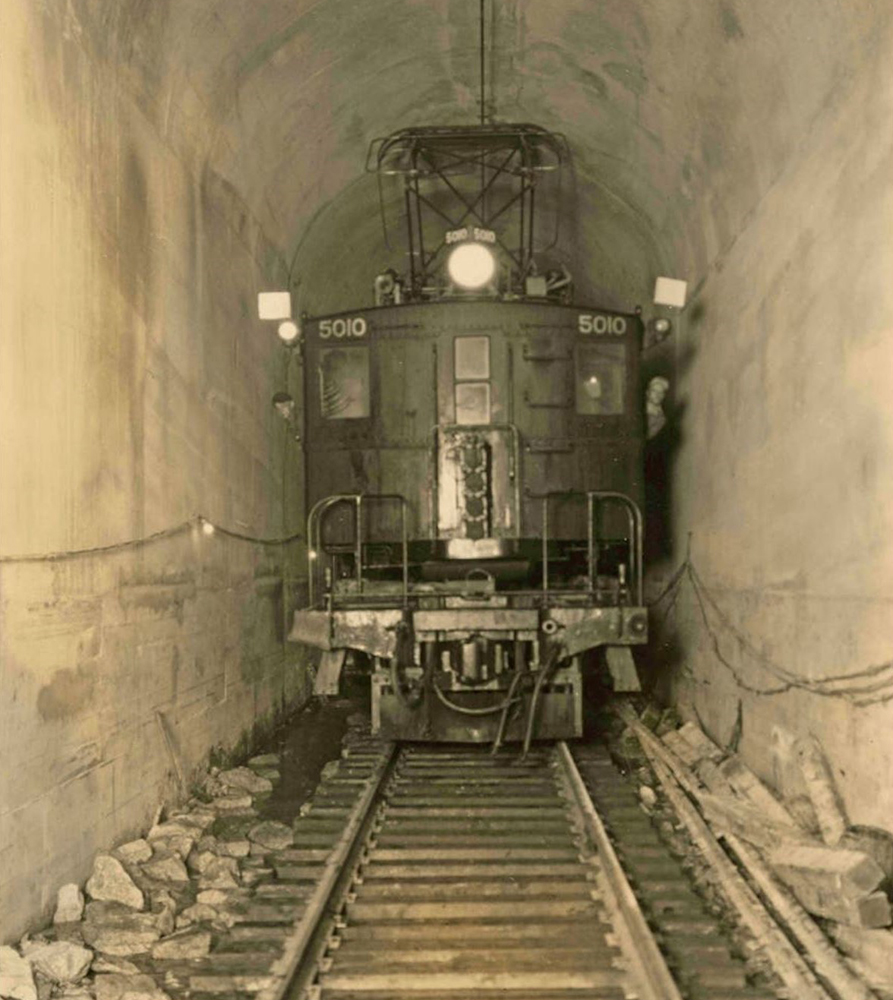
The tumwater dam that powers the locomotives
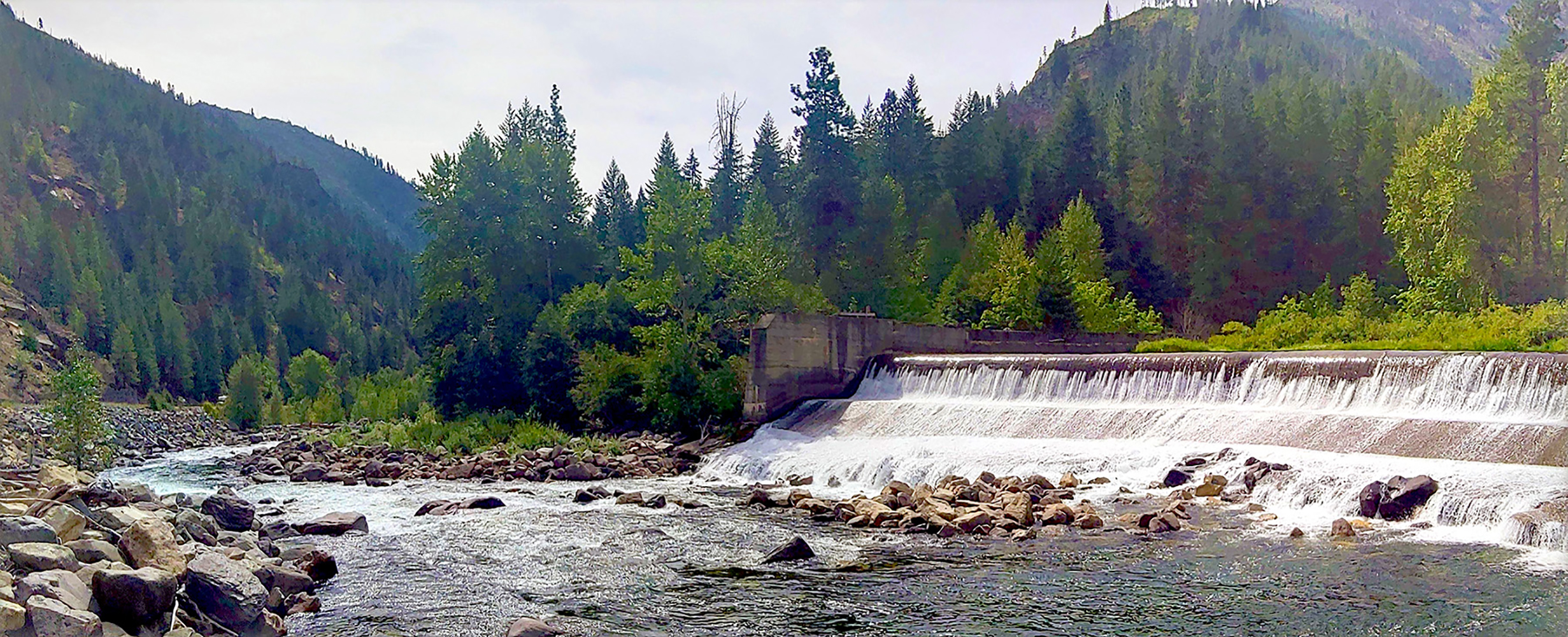
The west portal today

The west portal today
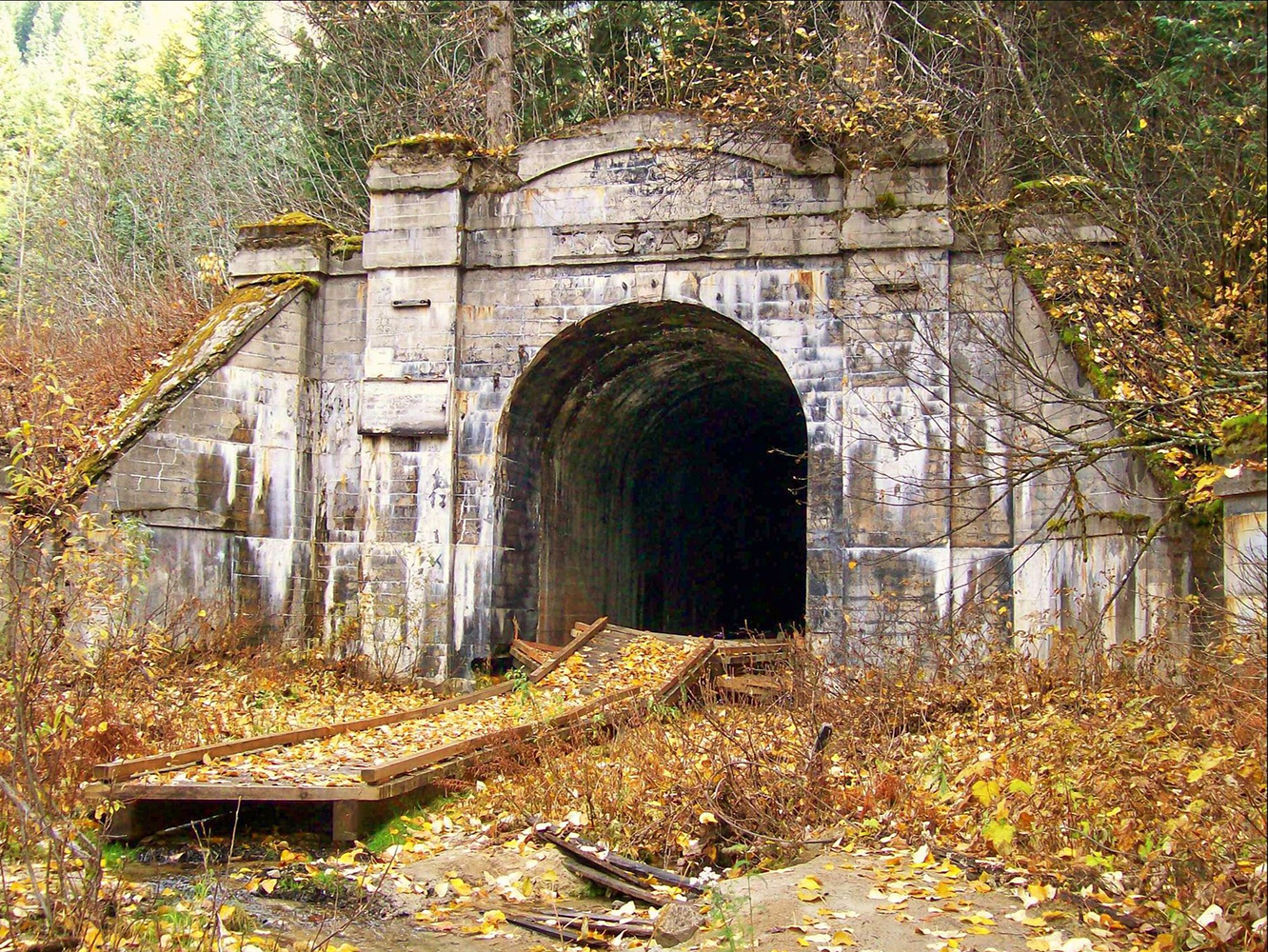
Today the rails west of the tunnel are part of the Iron Goat Trail
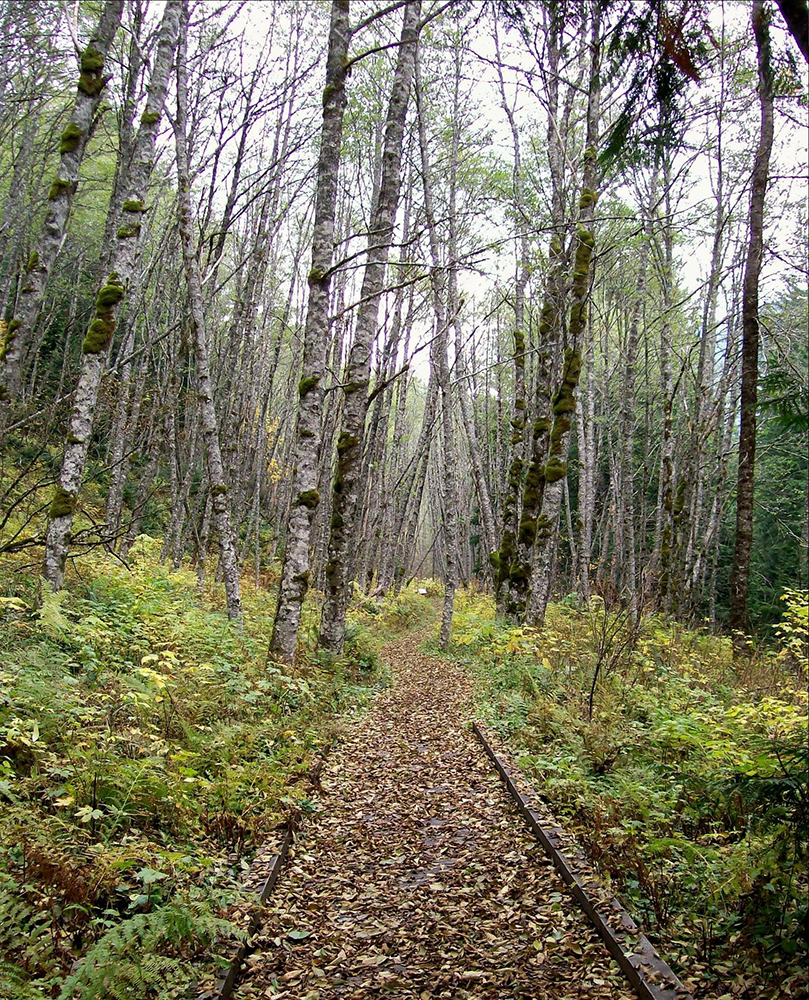
Elevation
